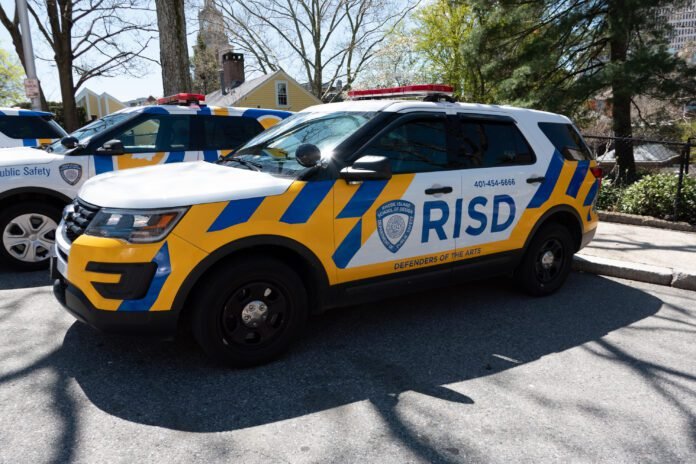Last Updated on May 27, 2024 by Nadeem Ahmed
In the intricate tapestry of modern society, one thread stands out: the commitment to public safety. Amidst the ebb and flow of daily life, the presence of public safety vehicles serves as a beacon of reassurance, symbolizing the unwavering dedication of emergency responders to protect and serve. From the silent watch of police cruisers to the blazing speed of fire trucks and the compassionate care of ambulances, these vehicles constitute the backbone of emergency response systems, embodying a collective pledge to safeguard communities against adversity.
Table of Contents
Police Vehicles: Sentinels of Law and Order
Police vehicles epitomize the frontline guardianship of law enforcement agencies, acting as mobile command centers in the perpetual pursuit of safety. Equipped with advanced technology and communication systems, these cruisers empower officers to uphold the law, respond swiftly to emergencies, and maintain order amidst chaos. The evolution of police vehicles has seen a shift towards versatility and efficiency, with pursuit-rated sedans, SUVs, and hybrid models enhancing both performance and sustainability.
Furthermore, the integration of predictive analytics and artificial intelligence augments the capabilities of police vehicles, enabling proactive crime prevention and targeted enforcement strategies. Advanced surveillance systems, including dashcams and body-worn cameras, enhance accountability and transparency, fostering trust between law enforcement and the communities they serve.
For a comprehensive overview of specialized emergency vehicles and innovative upfitting solutions, visit https://tcsupfitting.com/emergency-vehicles/.
The Evolution of Police Vehicles: Adaptation in a Dynamic Landscape
The landscape of law enforcement demands adaptability, prompting continual innovation in police vehicle design. From integrated GPS systems for precise navigation to enhanced durability for rugged terrain, these advancements ensure that officers are equipped to face diverse challenges effectively. Moreover, the integration of features such as automatic license plate recognition and real-time data access enhances situational awareness, enabling law enforcement to respond with precision and agility.
Beyond technological innovations, the emphasis on community engagement and outreach has influenced the design of police vehicles, with some agencies incorporating community policing decals and outreach materials to foster positive interactions and trust-building initiatives.
Fire Trucks: Defenders Against the Ravages of Fire
Fire trucks stand as formidable guardians against the ravages of flames, embodying the resilience and resolve of firefighting professionals. Equipped with powerful engines, high-capacity water pumps, and an array of specialized tools, these vehicles enable firefighters to combat fires swiftly and decisively. Moreover, the advent of aerial ladder trucks and specialized rescue vehicles expands the capabilities of fire departments, facilitating complex operations such as high-rise rescues and hazardous material mitigation.
In addition to firefighting duties, fire trucks often serve as multi-functional assets, providing support in medical emergencies, technical rescues, and disaster response scenarios. The integration of advanced firefighting foam systems and environmental monitoring equipment underscores the versatility and readiness of fire trucks to address evolving threats and challenges.
Ambulances: The Mobile Lifeline of Medical Care
Ambulances serve as the mobile lifeline of medical care, providing critical intervention in times of crisis. Staffed by skilled paramedics and emergency medical technicians (EMTs), these vehicles are equipped with advanced life support systems, enabling rapid assessment and treatment of patients en route to medical facilities. The evolution of ambulances has seen the integration of telemedicine capabilities and specialized equipment for critical care, ensuring that patients receive optimal care from the moment help arrives.
Furthermore, the design of ambulances prioritizes patient comfort and safety, with features such as advanced patient monitoring systems, ergonomic stretcher configurations, and climate control systems enhancing the quality of care delivered during transit. Ambulances also serve as mobile command centers during mass casualty incidents, coordinating resources and triaging patients to optimize emergency response efforts.
Specialized Vehicles for Unique Challenges
Beyond standard public safety vehicles, specialized units address unique challenges with tailored solutions. Hazmat response trucks equipped with decontamination systems and protective gear enable responders to mitigate chemical spills and hazardous material incidents safely. Similarly, water rescue vehicles and swift water boats provide essential support in flood emergencies, emphasizing the diverse roles that public safety vehicles play in safeguarding communities.
Moreover, the integration of unmanned aerial vehicles (UAVs) and robotic systems enhances the capabilities of specialized vehicles, enabling remote reconnaissance, search and rescue operations, and hazardous material detection in hazardous environments.
Conclusion: A Testament to Resilience and Resolve
Public safety vehicles stand as a testament to the resilience and resolve of emergency responders, embodying a commitment to serve and protect with unwavering dedication. From the steadfast presence of police cruisers to the swift response of fire trucks and ambulances, these vehicles are the vanguards of safety in times of crisis. As technology continues to evolve, public safety agencies will embrace innovation to enhance the capabilities of their vehicles, ensuring they remain steadfast guardians of communities for generations to come.
Apart from this, if you are interested to know more about Safety Tips for Driving On the Road While Driving a Truck then visit our Automobile category.
















